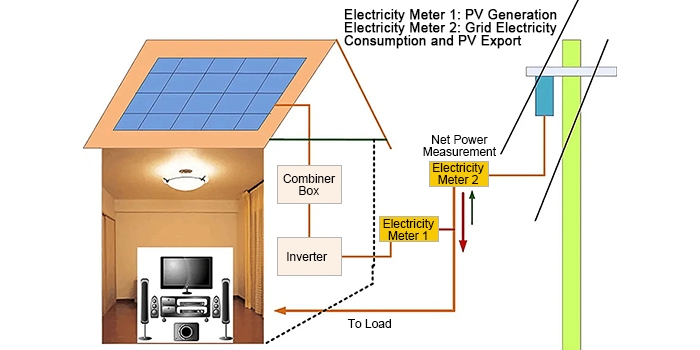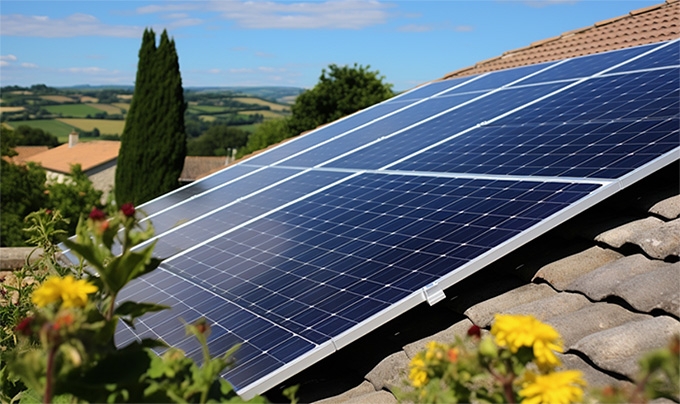As global awareness of environmental protection grows, the development and utilization of renewable energy have become a key focus worldwide. Among various renewable energy sources, solar power generation has gained widespread recognition and application due to its clean, efficient, and sustainable nature. Solar power plants and distributed photovoltaic (PV) generation are two primary forms of solar power generation. While both rely on solar energy, they exhibit distinct characteristics and advantages in practice. This blog aims to explore these two forms of generation in detail, helping readers understand their differences and connections.
What is a Solar Power Plant?
Before diving into the discussion, Home Power Inverter will first introduce what a solar power plant is. A solar power plant refers to a large photovoltaic generation facility constructed on open land or the rooftops of large buildings. These plants are typically connected to the grid, allowing them to supply large amounts of electricity to meet broad power demands. The development of solar power plants has undergone several technological innovations, from the first to the third generation.
- First-generation solar power plants: Primarily used crystallization technology with silver and silicon blocks, invented in the 1970s and still in use today as the cornerstone of the solar power industry.
- Second-generation solar power plants: Introduced advanced technologies such as thermal processing, chemical processing, and polysilicon to further improve photovoltaic conversion efficiency.
- Third-generation solar power plants: Explore cutting-edge technologies like nanotechnology, quantum dots, thin-film, and bifacial designs, aiming for more efficient and economical power generation.
Building solar power plants not only helps reduce the consumption of fossil fuels but also promotes local economic development while protecting the environment. These solar power plants, dotting scenic fields and hills, are gradually replacing traditional coal-fired power plants and becoming essential green energy sources for both urban and rural areas.

What is Distributed Photovoltaic Generation?
In contrast to solar power plants, distributed photovoltaic generation focuses more on small-scale, decentralized energy supply. It involves installing small solar power systems on rooftops, parking lots, and other locations, converting solar energy into electricity to meet local users' power needs.
The principle of distributed PV generation is relatively simple. PV panels capture solar energy and convert it into direct current (DC), which is then transformed into alternating current (AC) via an inverter to be used directly by buildings or fed into the grid. This generation method not only reduces power transmission losses but also increases energy efficiency. Additionally, distributed PV generation offers flexibility and scalability, allowing customization and expansion based on user needs.
Detailed Comparison Between Solar Power Plants and Distributed Photovoltaic Generation
- Difference 1: Generation Method
Solar Power Plants: Utilize centralized power generation by collecting solar energy over large areas of solar panels and converting it into electricity. This method is suitable for large-scale, centralized energy supply scenarios.
Distributed Photovoltaic Generation: Uses a decentralized approach, where PV panels are installed at various locations to produce and consume energy locally. This method is more flexible and efficient, suitable for smaller, decentralized energy needs.
- Difference 2: Applicable Scenarios
Solar Power Plants: Primarily suitable for large-scale power generation settings such as industrial parks, large commercial areas, and urban grids. These areas typically require large amounts of power and demand high stability, which solar power plants can provide.
Distributed Photovoltaic Generation: More suitable for small-scale power generation scenarios such as residential communities, small industrial areas, schools, and hospitals. These settings have relatively smaller power needs but require flexible and environmentally friendly energy solutions.
- Difference 3: Cost and Benefits
Solar Power Plants: Require higher initial investment due to the need for large-scale equipment and supporting infrastructure. However, with technological advancements and economies of scale, the cost of power generation from solar power plants is gradually decreasing. Moreover, solar power plants can generate revenue by selling electricity to the grid, offering both economic and social benefits.
Distributed Photovoltaic Generation: While initial investment costs are relatively lower, the smaller scale may result in slightly higher generation costs compared to solar power plants. However, distributed PV generation offers higher energy efficiency and flexibility, providing users with more reliable, clean energy. Additionally, distributed generation can benefit from government subsidies and tax incentives for further financial gain.

Future Prospects and Challenges
As the global energy transition accelerates, both solar power plants and distributed photovoltaic generation will experience broader development prospects. However, some challenges and issues remain.
- Technological Challenges: Improving the photoelectric conversion efficiency of photovoltaic cells, reducing production costs, enhancing system stability and reliability, and optimizing the efficiency and performance of sine wave inverters are the main technical challenges facing the photovoltaic industry today. As a key component of photovoltaic power generation systems, the efficiency and performance of sine wave inverters are directly related to the quality of the power output and the overall effectiveness of the system.
- Market Challenges: With increasing market competition, maintaining the competitiveness of solar products, expanding new application areas, and increasing market share are crucial for solar companies.
- Policy Challenges: Government support and guidance are critical for the solar industry's development. Developing reasonable policies, improving relevant laws and regulations, and promoting technological innovation and industrial upgrades will be key directions for the future development of the solar industry.
Conclusion
Solar power plants and distributed photovoltaic generation, as two main forms of solar power generation, each have unique advantages and characteristics. Solar power plants are suited for large-scale, centralized energy supply scenarios, while distributed PV generation is more suitable for small-scale, decentralized energy needs. In the future, as technology continues to advance and the market grows, both generation methods will play an increasingly important role in the global energy transition. We look forward to a time when solar power becomes the mainstream choice for global energy supply, contributing to sustainable development for humanity.
